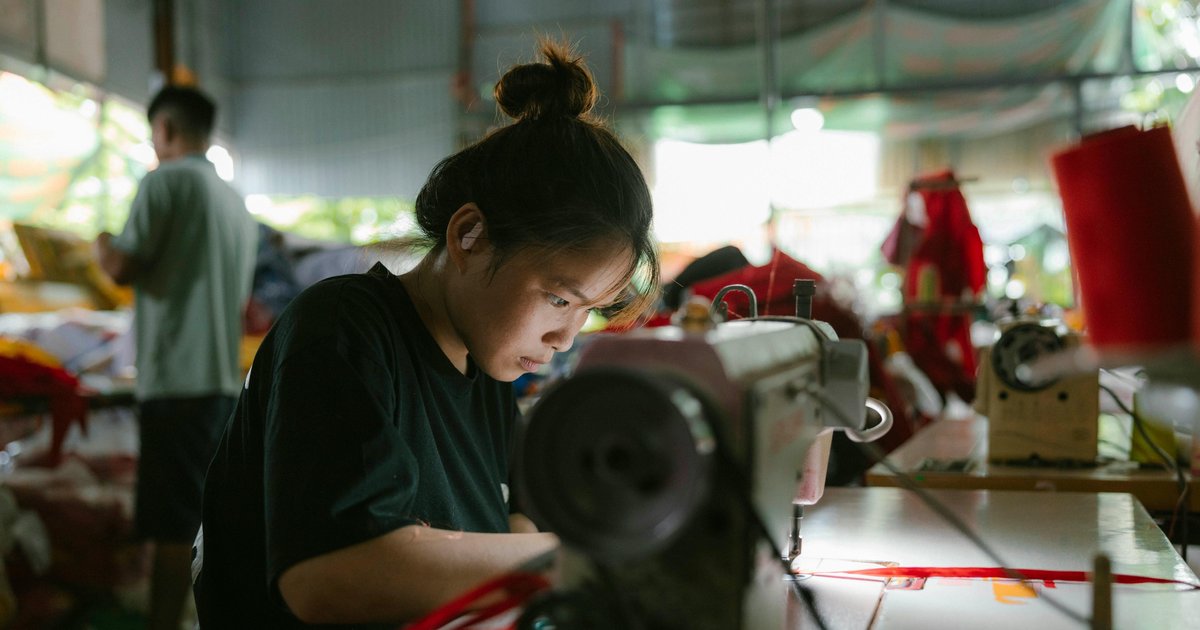Fashion
Remanufacturing: A Fitting Fashion Sustainability Solution

Remanufacturing: A sustainability solution
Remanufacturing is when companies take used or old parts and products, dismantle them and return them to a like-new, same-as-new or better-than-new condition. Remanufactured fashion operates under the same waste management principle, converting discarded garments into useful retail products instead of dumping them in landfill.
“Remanufacturing aligns with the circular economy principles by extending the lifecycle of products and minimising waste,” says Andrew Burton, Global Industry Director for Manufacturing at IFS. “It emphasises reusing, repairing and refurbishing products instead of disposing of them. This approach reduces the need for new raw materials and lowers carbon emissions associated with manufacturing.”
According to the European Remanufacturing Network (ERN), remanufacturing has an EU market potential of €90bn (US$99bn) by 2030. This projection is driven by regulatory pressures, growing prioritisation of sustainability and the rise of circular economic practices. Remanufacturing also offers significant financial benefits, according to Andrew.
“One of the primary benefits is cost savings, as it reduces the need for raw materials and energy-intensive manufacturing processes,” he says. “Companies can also realise savings by reusing components and materials, lowering production costs.”
Global fashion brands are embracing remanufacturing for all these reasons and more. Patagonia Worn Wear, Levi’s SecondHand and Urban Outfitters are among those remanufacturing offshoots of their iconic brands.
However, to increase the prevalence of remanufacturing, companies must move from implementing it as a siloed solution to undergoing holistic supply chain evolution.
“Companies are recognising the benefits of reducing their carbon footprints and extending the life cycle of their products,” comments Maggie Slowik, Global Industry Director for Manufacturing at IFS.
“To position themselves to benefit from this growth, companies should invest in developing circular business models that focus on remanufacturing.
“This involves rethinking product design to enhance durability and ease of disassembly, implementing effective return logistics systems and utilising technologies such as AI for better forecasting and inventory management.
“Additionally, companies should engage in collaborations within the ecosystem to find new uses for their waste materials, thereby creating new business opportunities and reducing dependency on raw materials.”
While remanufacturing poses revolutionary possibilities, it also comes with extensive barriers to adoption.
These barriers include price competitiveness for remanufactured products, legal barriers like restrictions on product design, the ongoing skills shortage and securing a good, consistent supply of end-of-life core returns.
Handling logistics is also a challenge, as Andrew explains: “One major barrier to full adoption of remanufacturing practices is the challenge of setting up effective return logistics systems to retrieve used products.
“Manufacturers need to establish mechanisms for collecting, assessing and processing returned items. Another barrier is the need for new business models and processes that support the circular economy.
“Overcoming these barriers requires companies to invest in technology that supports remanufacturing, such as advanced tracking systems and the latest high-quality inventory management solutions, with AI increasingly adding more functionality.”
In addition to AI, Maggie points to the power of partnerships: “Fostering partnerships within the industry can help create a more robust ecosystem for sharing and reusing materials.
“Regulatory incentives and consumer demand for sustainable products can also drive wider adoption of remanufacturing practices.”
Despite the challenges, Maggie and Andrew both foresee a future full of remanufacturing, where sustainable materials and emerging technologies help boost the feasibility and success of circular business models. A key factor in building this future will be growing market demand for sustainable goods.
According to PwC’s Voice Of The Consumer survey, consumers in 2024 are willing to spend an average of 9.7% more on sustainable goods, even during a cost-of-living crisis.
Many fashion consumers are fiercely committed to ethical and sustainable shopping, contributing to the success of esteemed sustainable designer Stella McCartney and the rise of new brands like Lucy and Yak.
“Consumer demand for sustainable products will continue to rise, leading to greater market acceptance and growth of remanufactured goods,” Andrew says.
“Companies that embrace these trends and invest in innovation will be well-positioned to thrive in the evolving remanufacturing landscape.”
The barriers to remanufacturing – particularly logistics and supply – all originate within the supply chain. For this reason, fashion manufacturers must build a resilient, well-managed supply chain foundation to pursue remanufacturing successfully as an overarching, long-term strategy.










